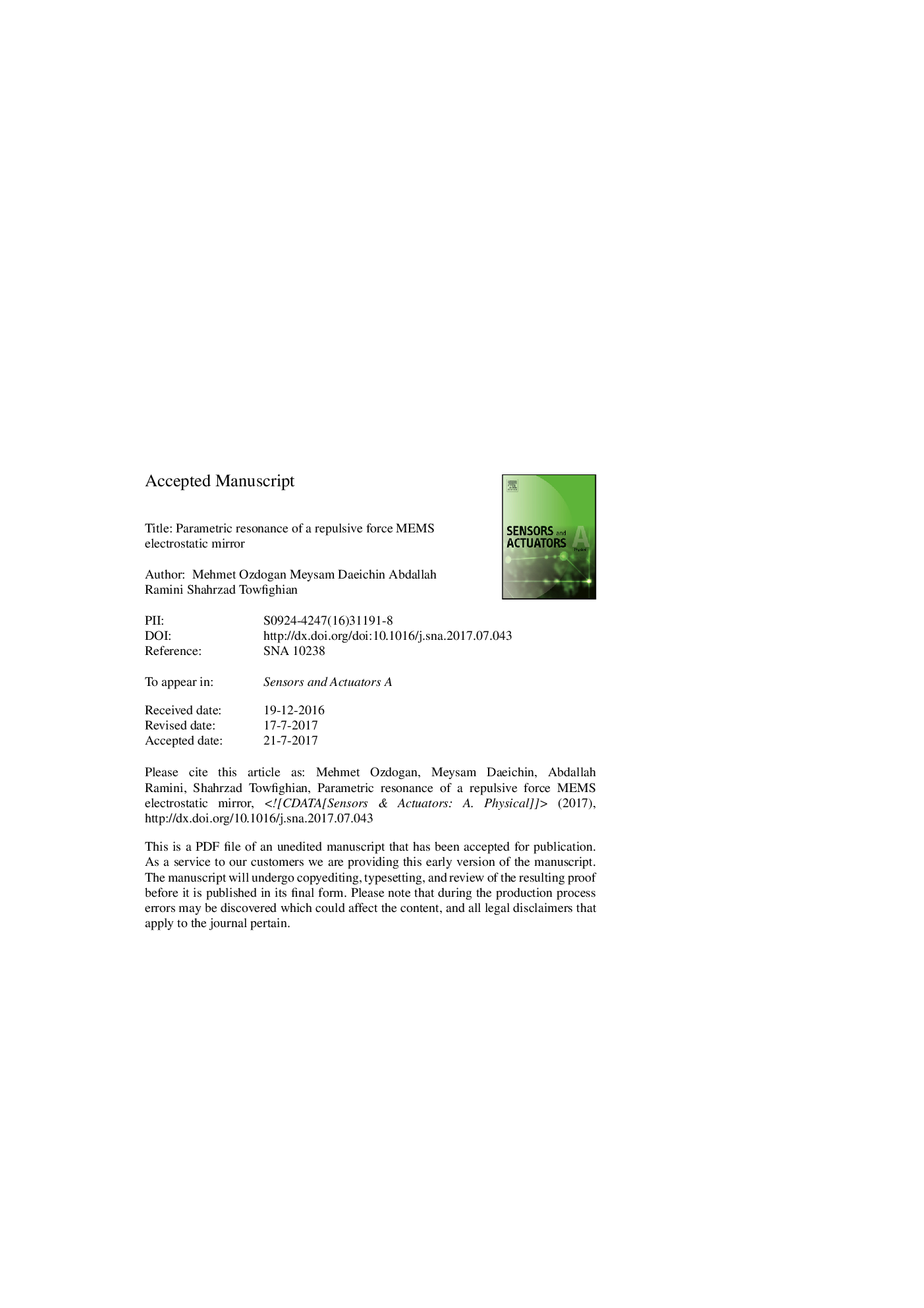| Article ID | Journal | Published Year | Pages | File Type |
|---|---|---|---|---|
| 5008210 | Sensors and Actuators A: Physical | 2017 | 24 Pages |
Abstract
We investigate the nonlinear dynamic behavior of an electrostatic MEMS mirror. The MEMS mirror is driven by repulsive force actuators, which avoid pull-in instability and enable large travel ranges. In parallel-plate actuators, the force on the structure is toward the substrate limiting the range of motion to the capacitor gap. Unlike parallel-plate, repulsive force actuators push the mirror away from the substrate not limiting the motion. The highly nonlinear nature of the repulsive force and the large motions create unique characteristics that differ from parallel-plate actuators. Repulsive force actuators show linear natural frequency hardening with increased DC voltages unlike parallel-plate ones that have frequency softening. A large parametric resonance is another attribute of repulsive force actuators as the limitations of a small gap and pull-in instability are eliminated. To simulate the system response, we use a lumped parameter model with linear and cubic stiffness modulated by the excitation voltage that causes parametric resonances. Using the shooting technique, we obtained simulations that agree well with the nonlinear responses observed in our experiments. As the limitation of a small gap is overcome, the electrostatic force triggers large principal parametric resonances with amplitudes as large as the primary resonance. The parametric resonance is more pronounced at low DC excitation levels when geometric nonlinearities are not significant (axial stress is low). While the initial gap is only 2 μm, under parametric resonance, our one-millimeter diameter mirror reaches ±43 μm at 1.2 kHz when the excitation level is as low as VDC = 40 V, VAC =1 V in a vacuum. The ability to achieve parametric resonances with repulsive force actuation can serve and improve the signal-to-noise ratio and speed in various applications such as confocal microscopy.
Keywords
Related Topics
Physical Sciences and Engineering
Chemistry
Electrochemistry
Authors
Mehmet Ozdogan, Meysam Daeichin, Abdallah Ramini, Shahrzad Towfighian,
